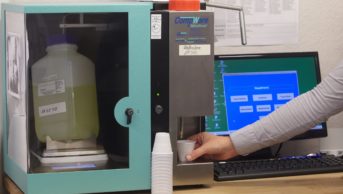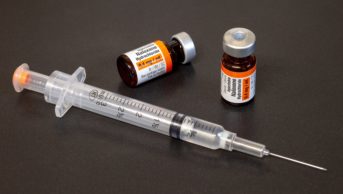
Shutterstock.com
Long-term opioid use for chronic non-cancer pain is rising steeply in England — particularly in the north and areas of social deprivation — according to a study in the British Journal of General Practice (online, 13 February)[1]
.
The results were published just a fortnight after the government asked Public Health England to carry out a “landmark review” to look at prescription drug addiction and dependency in England.
Analysis of national NHS prescribing data from 2010–2014 for eight of the most commonly prescribed opioids showed that tramadol was by far the most prescribed, with 139,222,060g handed out during the 43-month study period.
The research highlighted that, during that time, buprenorphine and codeine showed the greatest rate of increase, and only two opioids, methadone and dihydrocodeine, showed a decrease.
Fentanyl was, by far, the least prescribed drug of the eight investigated, and the quantities prescribed remained fairly constant over the study period.
The researchers expressed the total amount of opioids prescribed in equivalent milligrams of morphine, rather than the number of prescriptions, and found a clear north-south divide, with nine out of ten of the highest prescribing areas located in the north of the country.
The researchers said that there could be several reasons for the high and increasing use of tramadol, including an upsurge in its use after the withdrawal of co-proxamol in 2000; the preference to prescribe it over non-steroidal anti-inflammatory drugs, which are associated with complications; and that it may provide “a false sense of security to prescribers” who do not see it as a “strong” opioid.
Methadone, which is mostly used to treat drug dependency rather than pain, was found to have fallen during the study period, which may be due to the rise of buprenorphine being used as an alternative, they said.
“This study exposes increasing rates of prescription of a class of drugs whose use for chronic pain is controversial, with potential for abuse, and an association with serious adverse effects and premature death,” the researchers from University College London Hospital, concluded.
The authors recommended the setting up of a national database of patients taking large amounts of opioids to improve patient safety and provide epidemiological data regarding prescribing patterns.
Helen Stokes-Lampard, chair of the Royal College of GPs, responded to the report and said that GPs were working hard to limit opioid treatments but needed alternatives.
“While some prescribed medication has been shown to be addictive, many of these drugs, when used appropriately and in conjunction with established clinical guidelines, are safe to use, and can, most importantly, help relieve patients from debilitating and painful symptoms,” she said.
Stokes-Lampard added that most patients did not want to be on long-term prescriptions.
“Where possible, GPs will always try to explore non-pharmacological treatments — but these are often hard to come by at a community level, leaving family doctors with few alternatives that are still of equal benefit to the patient.”
References
[1] Mordecai L, Reynolds C, Donaldson L et al. Patterns of regional variation of opioid prescribing in primary care in England: a retrospective observational study. Br J Gen Pract 2018. doi: 10.3399/bjgp18X695057


